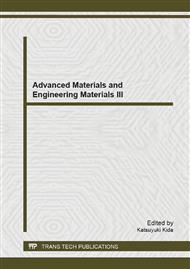[1]
Pendry, J. B., A. J. Holden, D. J. Robbins, W. J. Stewart. Low frequency plasmons in thin-wire structures[J]. J. Phys. Condens. Matter., 1998. 10: 4785–480.
DOI: 10.1088/0953-8984/10/22/007
Google Scholar
[2]
Smith, D. R. and N. Kroll. Negative refractive index in lefthanded materials[J]. Phys. Rev. Lett., 2000, 85: 2933–2936.
DOI: 10.1103/physrevlett.85.2933
Google Scholar
[3]
S. I. Maslovski, S. A. Tretyakov, P. A. Belov. Wire media with negative effective permittivity: a quasi-static model[J]. Microwave and Optical Technology Letters, 2002, 35(1) : 47-51.
DOI: 10.1002/mop.10512
Google Scholar
[4]
P. A. Belov, R. Marque´s, S. I. Maslovski, et al. Strong spatial dispersion in wire media in the very large wavelength limit[J]. Phys. Rev. B, 2003, 67, 113103: 1-4.
DOI: 10.1142/9789812704344_0025
Google Scholar
[5]
Richard W. Ziolkowski. Design, fabrication, and testing of double negative metamaterials[J]. IEEE Tran. on Ante. and Prop. 2003, 51(7): 1516-1529.
DOI: 10.1109/tap.2003.813622
Google Scholar
[6]
Pendry, J. B., A. J. Holden, D. J. Robbins, W. J. Stewart. Magnetism from conductors and enhanced nonlinear phenomena[J]. IEEE Trans. Microwave Theory Tech., 1999, MTT-47: 2075–(2084).
DOI: 10.1109/22.798002
Google Scholar
[7]
Smith, D. R., D. C. Vier, W. Padilla, S. C. Nemat-Nasser, S. Schultz. Loop–wire medium for investigating plasmons at microwave frequencies. Appl. Phys. Lett., 1999, 75: 1425–1427.
DOI: 10.1063/1.124714
Google Scholar
[8]
P. Markos, C. M. Soukoulis. Numerical studies of left-handed materials and arrays of split ring resonators[J]. Phys. Rev. E, 2002, 65, 036622: 1-8.
DOI: 10.1103/physreve.65.036622
Google Scholar
[9]
Shelby R. A., Smith D. R., Schultz S. Experimental verification of a negative index of refraction[J]. Science 2001, 292: 77-79.
DOI: 10.1126/science.1058847
Google Scholar
[10]
Michael W. F., Ilya V. S., Yuri S. K. Tunable transmission and bistability in left-handed bandgap structures[J]. Physics. 2004, 2(14): 0401094-1-0401094-3.
Google Scholar


